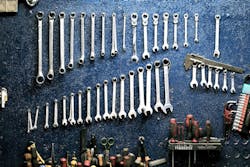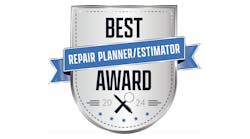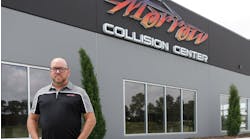Technicians continue to be in short supply in the collision repair industry and someone who is hired as an entry-level technician or even an A-technician may not be as efficient as you would like.
While it may seem like it’s the technician’s fault if he or she doesn’t produce enough hours or finish jobs, the key to making technicians work more efficiently comes down to body shop managers setting performance expectations and then following through on those in check-in meetings, says Keith Manich, collision director for the Automotive Training Institute.
While determining the right technician performance expectations can get tricky, improving technician efficiency is about setting goals and understanding technician capacity, says Bud Center, lead associate, subject matter expert for I-CAR.
Manich and Center touch on top areas that affect technician efficiency and what managers should keep in mind.
Technician Capacity
Technician capacity is the term used when an operator wants to know what the technician is producing per day, per week on average, Manich says. He says he’d rather not have a person working on five jobs but not closing any of them and instead have a technician working on less jobs and closing more of the jobs per day.
Technician capacity is a critical starting point because it indicates what the technician can produce per day, Manich says. If a technician is given too many jobs, they will be able to turn a lot of hours but their production throughput will be reduced because they will not be able to finish the jobs. Manich says this area can be improved by looking at what the technician is producing per day, hours working per week and the total number of cars that the technician closed. For example, a technician that works on 3 cars (1-2.5 optimum) will produce hours but the jobs won’t close efficiently.
Stall to technician ratios are critical to improve production and efficiency. This does depend on the type of work they are doing and the severity of the repairs, Manich says.
Fast Lane
Fast lanes can have significant impact on cycle time and inversely increase touch time, Center says.
A fast lane is as simple as processing the vehicle through the fast lane production stream. Overall, the process can develop zero-day cars, Manich says. For DRP relationships, fast lanes can significantly increase production numbers by adding cars into the count but reducing the work days because the cars are completed within 24 hours.
The fast lane should and does not impact the days worked but can be used to offset the days spent. The day count is overall diluted and makes it appear that more vehicles are repaired in less time. This is good for cash flow, rental costs and for showing the store produces at maximum capacity per week, Manich says.
Performance Reviews
The shop operator can take an opportunity to meet with the technician to privately discuss the week’s production.
Performance measurements and goals can also be incorporated into morning production meetings, Manich says. A body shop manager should account for WIP hours in the production schedule to make sure the vehicles have had parts, labor and other repair factors already in process and assigned to them, he says. Make sure the meetings reflect the need to meet objectives and have consistent and repeatable processes.
Discuss not just the technician’s performance, but also his or her performance in relation to the overall shop’s performance, Center says. Discuss what the technician is doing well and any items that can be improved upon. Have specific job numbers on hand to reference in the meeting.




